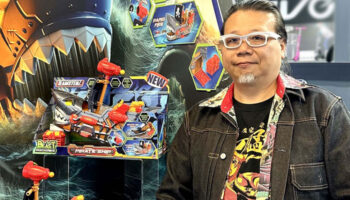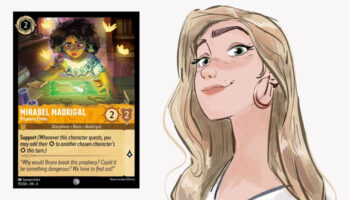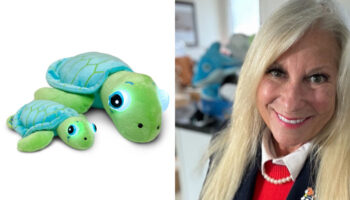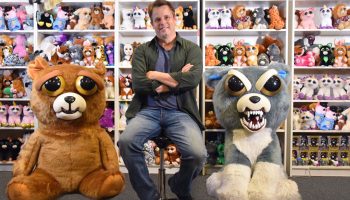Keeping notes and taking advice: Spin Master’s Randy Klimpert discusses his outstanding career

It’s been while since Mojo tapped on your door, Randy. Thanks for joining us. To start, may I ask where the name Klimpert comes from? It’s very strong; does it have a meaning?
Thanks guys, I always love when Mojo comes tapping. And this is a great question, something I don’t think I’ve ever been asked before. Klimpert is German, but it’s like one of those great German words that don’t have simple English translations. You know, words like doppelganger, schadenfreude, zeitgeist – the Germans seem to be purveyors of ideas that don’t translate easily.
I know exactly what you mean… Words we can only approximate.
Right! And Klimpert sort of means to jingle, like coins in your hand or keys in your pocket. But it also can mean to play an instrument, though absentmindedly, like tinkling the keys of a piano or strumming a guitar – but again, casually, not seriously or particularly well. My dad, the Mad Men-era advertising guy, used to say, “Klimpert means tinkle!” purely for the shock value. So in German, ‘klimperting’ is making small, funny, unintentional sounds. And I’ll happily own that! Seems just about right for a toy design guy who also collects musical instruments. And of the two names I’m stuck with, it’s a heck of a lot better than Randy.
Ha! You don’t like your first name?
Never was a fan. Though I guess I’m better off than my sister Karen. But no, I’ve never been fond of Randy, and it just keeps getting worse… In grammar school it was unusual to be a Randy among the Brians and Daves and Steves, which was frustrating. But now it’s a bona-fide joke. Here’s a free tip for aspiring screenwriters: if you need characters that get cheap laughs at the mere mention of their names, you can’t do better than a Randy or a Karen.
Ha! Brilliant! So, Mr. Klimpert… You’ve been VP Design at Spin Master for a short while. Enjoying it so far?
Love it. I just celebrated my one-year anniversary, and although I was hired to lead Games Design, I now also lead Outdoor and Plush – all design in the Spin Master East offices. So, yes, I just love that; it’s a great stretch of my design chops. In terms of timing, I think this was absolutely meant to be – that my career has been on an arc pointing to Spin all along. I was inventing back in Chicago when Spin Master started up, and when they would come in to look at product I just marveled at their instincts.
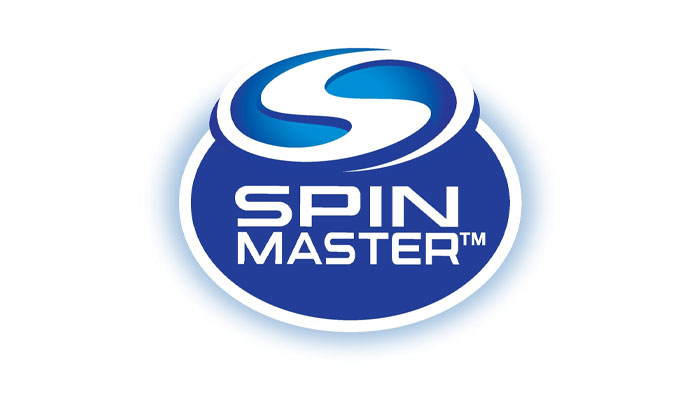
They were a start-up but very sophisticated at the same time, and they just loved the inventor community, which we still do. I’ve always thought of Spin as the company where literally anything is possible, bring us the impossible and we’ll do it. I’ve just always been a fan.
Great answer. And broadly speaking, what is it you look for in a new product? How do you know if something is right for Spin?
There’s that popular trope that there are no bad ideas in a brainstorm, which I agree with, but I prefer to think of ideas based on size – there are big ideas and small ideas. A small idea could be timely and even make a lot of money, but big ideas make news, and – done right – they might just change the paradigm. The trick is to tell the difference.
Beyond that, I think you need to objectify ideas by taking them apart – feature, theme, play pattern – so you can have a common language. The ideas that are the strongest combination of elements end up as products that are understandable to the consumer without a lot of description – and that’s the goal for me. I strive for that balance between familiarity and novelty, that “easy get” that tells its own story. But you need a way to talk about them first, and that’s why I like to take them apart.
Can you expand on that?
So, for example, we might discuss how one idea has an awesome feature, but the theme is weak. Another one has a funny theme and is fun to play with – but there’s not enough magic in the feature. Some people will tell you a toy that’s the most fun will always win, but I think play pattern is only a part of the picture.
In terms of what works for us, I think almost anything could be right for Spin. There are companies that pass on opportunities because they don’t fit a current strategy or a brand. Or maybe they won’t have enough long-term potential. I think we’ll take risks with the right ideas, that’s core to Spin’s DNA.

Fantastic! You’ve had a long career in the industry, Randy. As I understand it, you were responsible for the design of the He-Man and Skeletor Battle Armor figures. Does that mean you worked with Marvin Glass & Associates? What was that like?
Yup, sure did! I was 21, newly minted with an industrial design degree from the University of Illinois, a starting point for a lot of designers, especially in Chicago. Looking back, Marvin Glass & Associates was a great place to start, kind of like a boot camp for the toy industry. But it was so very overwhelming. You got no ramp up: you came out of the naivety of college – and boom! You were in the deep end of the pool. It didn’t matter that you got good grades and were proud of how well you could sketch a toaster with magic markers. Now you were expected to come up with saleable toy ideas, build the mockups and pitch.
Wow…
On my very first day, they showed me to a wooden bench in the basement model shop between two tough, VERY veteran modelmakers, Roger and Nikolai. Roger had a strong French accent and Nikolai spoke only Russian. It turned out that Marvin Glass believed international modelmakers were better than American-born ones. So there was Nikolai, Roger, Fritz, Frank, Dieter… It was like the United Nations of model making! That first day I must have said something like, “Whuh, no office?” My ad-biz dad was in a corner office on the 69th floor of the Standard Oil building on Lake Shore Drive and I’m on a bench in a basement with no windows. Marvin Glass lesson number one: you had to sell something to get an office.
Ha! And for completeness sake, what were the surnames of that motley crew?
That was Nikoli Jawarski, Roger St. George, Fritz Fauser, Frank Wimmer and Dieter Herbstler.
How did you come up with Battle Armor He-Man?
Right… So I started by creating a bunch of gimmicks for a crashing car game, which was how they got me started. I just couldn’t figure what the game was supposed to be but ended up with some very cool features. The best of these was a spring-loaded mechanism for instantaneous spinning transformations, a beautiful effect because, at the right speed, it’s too fast for the eye to see. I borrowed that from magic, a lot of stage illusions are based on that principle. But I was trying to put it into a silly action game where players slammed cars until they got dented…
So the cars had that component in them, but they were part of a game?
Exactly right. So I go upstairs to show it to the bosses, asking for direction, and they say – and I’ll never forget this: “If we knew what we wanted, we wouldn’t need you.” And they send me back to the bench… Then, after some more tweaking, another designer says, “Look, take the crashing car out of the game and just do that alone.”

Get rid of the game! The game’s in the way!
Yup. So that’s the feature that became Hot Wheels Crack Ups; small die-cast cars that got dents when you crashed them. A few months later, I put the same gimmick into the chest of an action figure and THAT became Battle Armor He-Man for Masters of the Universe. Selling those two things right out of the gate got me on track at Marvin Glass. More importantly, they got me an office.
Superb! Great story! And in regard to Marvin Glass & Associates, did you know at that time that the company was still doing something extraordinary? That you were cutting a swath?
Oh, I certainly knew the company had done extraordinary things; that history was the lure of the place. And though Marvin Glass, the man, was long dead by that time, he still had a very palpable presence. There was no escaping his legacy: the guy who quite literally invented inventing. After all, this was the company that had produced Operation, Simon, Lite Brite, Mouse Trap and SO many other classics.
Those products were already considered great…
Certainly. If you were going to be a toy inventor, this was the place to start… The company was bursting with ideas and talent, unparalleled toy industry insights and instincts. But even with all the creative firepower, the ability to predict which ideas would sell? Nobody had that. It was purely a numbers game, you won by volume. So ‘which would become icons’ wasn’t even a thought. I was pretty brash in my twenties, and – believe me – if I’d said, “You see this one? I’ll be asked about this throughout my entire career,” they would’ve fired me on the spot. Besides being cheeky, it would’ve been seen as tempting the gods of invention luck. And even though I sold six or seven items in my two years at Marvin Glass, it was only by sheer chance that Battle Armor was the one that culturally stuck.

I’m curious to know, Randy: how do you stay creative?
I write everything down, which I’ve been doing since college; it’s a habit. I carry blank notebooks and pens everywhere I go – I have hundreds. It’s that other well-worn trope that you should keep a pad by the bed so ideas you dream don’t get forgotten. And I absolutely do that all the time. Because if you don’t record them, they’re lost in the ether, and they just don’t come back. So it gives you the permission you need to forget. If the idea’s written down, you’re not burdened with remembering: you can go on to the next idea unencumbered.
And because ideas rarely come fully formed, the little bits may mean nothing alone… You’ve got to write everything down so you can string them together later. Or not! And that’s the other thing. When you write everything down, you’ve got to embrace the absurd. Albert Einstein said, “Any idea that’s not at first ridiculous has no chance of success.” I’m paraphrasing – what he said was much more eloquent – being Einstein and all! But he said something like that.
I’ll stick it in here as an image… Great sentiment.
Yes, I just love it: it’s one of my guiding principles. Ideas should be either weird or funny or stupid. Whenever I get any fleeting, seemingly nonsensical thoughts, I write them down. Sometimes words, but often I draw little thumbnails. I’m not great at drawing toasters anymore, but I’m a good doodler. People who know me will tell you I’m always riffing. And it’s a very good feeling too… I’m quite sure your brain gets flooded with endorphins when you ideate. I challenge the neuroscience community to put people in MRIs while they’re brainstorming and see what brain parts light up. I guarantee there are some key chemicals being released.
We do need to start wrapping this up, Randy, but it pains me to say that as I’m thoroughly enjoying the conversation! One thing I did want to ask about… As we’ll as notebooks, I’m told you have the most enormous collection of ukuleles! How come? What’s their appeal?
I believe it’s every designer’s responsibility to have an object fetish. Almost every designer I know collects something, usually toys or games, whether they’re in the toy business or not. And since our industry is mostly manufacturing, making the things that facilitate experiences, we should be the experts of ‘things’. The shapes, the colors, the functions, the relationships of the parts to one another are crucial. How can we not get sucked into acquiring things? It just goes with the territory. So if I had an enormous action-figure collection, it wouldn’t raise an eyebrow.

This is true!
Or comic books. Or games! I know people with 10,000 games in their basements. It just turns out my collecting didn’t start with vintage toys and games; I started buying instruments, mostly ukuleles, which I did because they were available. I moved to LA after Marvin Glass and started doing garage sales and flea markets on weekends, and ukes were just everywhere. The vintage guitar market was just starting to heat up, but ukuleles – essentially toy versions of guitars – hadn’t popped yet. So I started grabbing them whenever I saw them. They were cheap, sometimes free. I’ve had lots of people just give them to me.
Moving back to Chicago again, I lived in this loft, a former globe factory, and on these big blank, uninterrupted walls with 20-foot ceilings, I started hanging ukuleles in regular intervals, like an art installation. Or like uke wallpaper. Then it started growing mathematically, from 12 to 24 to 48 to – well… A lot! And it just sort of spiraled from there. It’s around a thousand now, give or take, though I don’t have a wall big enough anymore. So yes, I should probably slow down.
Ukuleles aside, what’s the most interesting thing in your office?
One of the first things I did at Spin was hang my enormous 2001: A Space Odyssey poster on the wall behind my desk. I guess I have a thing with blank walls. I’m a big Kubrick fan and it’s that incredible, iconic, gouache illustration – but for the French release of the movie. It says 2001: l’odyssey de l’espace, which is so cool, much more interesting than a white board. I suppose with my Germanic background 2001: odyssee in weltraum might be better, but – as with the ukuleles – beggars can’t be choosers at flea markets. The important thing is that I’ve worked my way up to an office.
Ha!
I also have a paperweight made from preschool wooden alphabet blocks, glued together to spell my name. It was onboarding swag from a previous employer, and it says RANDY KLIMPERT on the front, but because they’re blocks with letters on both sides, it also says LQANE GERCZVYX on the back. So that’s the side I use. And while I’m not sure what GERCZVYX means, LQANE is still better than Randy.
Well, what can I tell you? This has been a joy; well worth the wait. Thank you so much for your time, Lqane.

–
To stay in the loop with the latest news, interviews and features from the world of toy and game design, sign up to our weekly newsletter here





